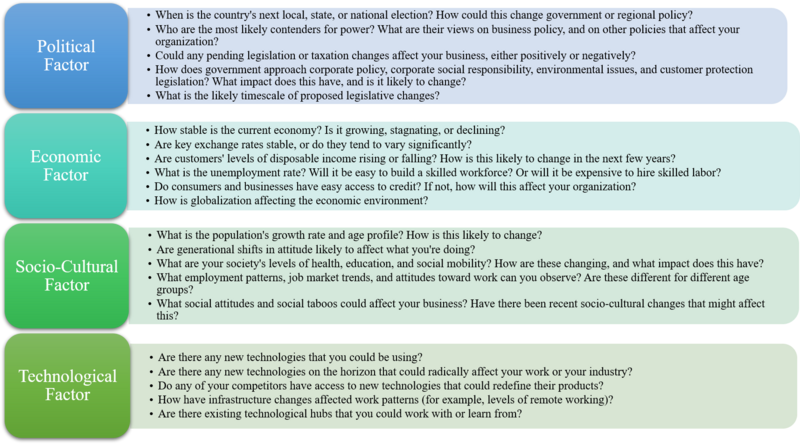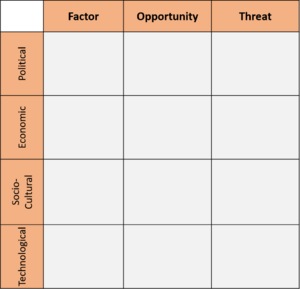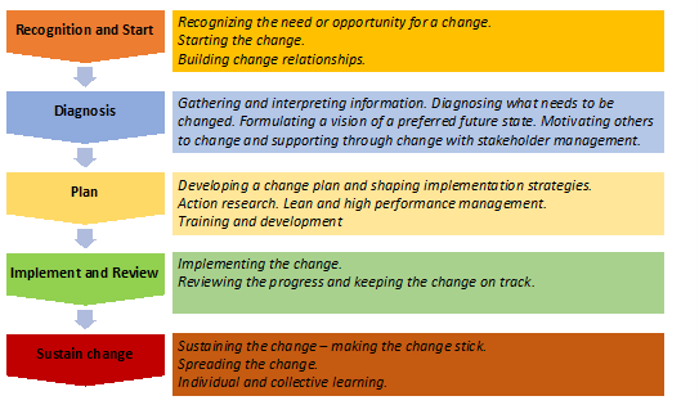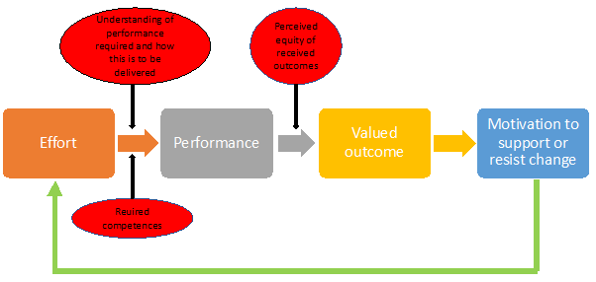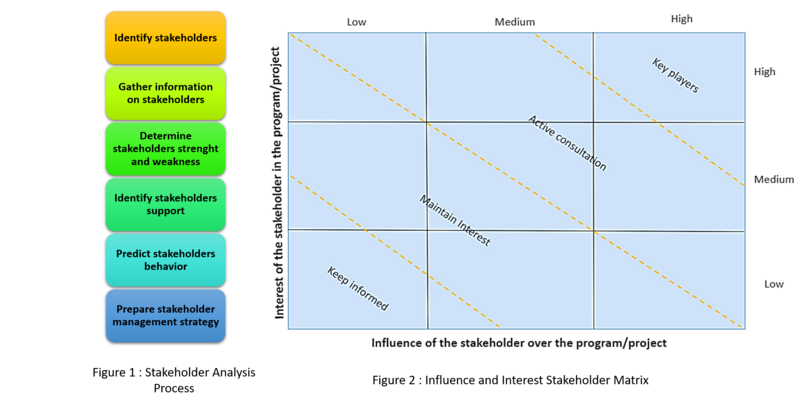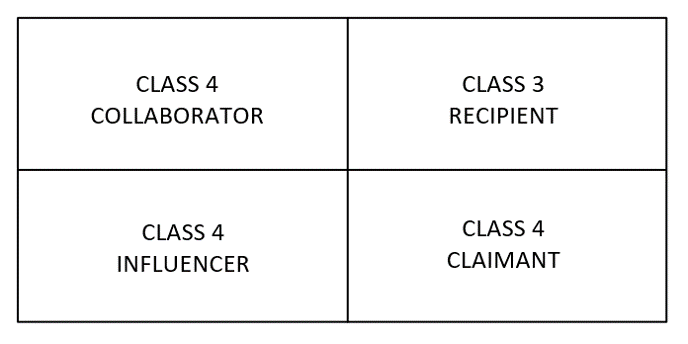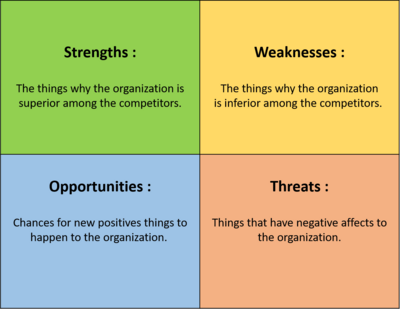Atkins APPPM
Cloefierri (Talk | contribs) (→References) |
Cloefierri (Talk | contribs) (→Golden Circle (Why, How and What)) |
||
| Line 127: | Line 127: | ||
---- | ---- | ||
=== Golden Circle (Why, How and What) === | === Golden Circle (Why, How and What) === | ||
| + | |||
| + | ==== Description : ==== | ||
A key aspect in project management is to establish a strong vision. There are many ways to establish a vision and the Golden Circle Model is one of them. This management tool is based on 3 concentric circles corresponding to three questions: Why, How and What. To use this tool, developed by Simon Sinek, an organization/ a leader/ people must think from inside out to drive projects purposefully. The WHY question starts by identifying the purpose of the project (shall not be answered with something as making money because it’s a consequence), then the HOW question describes how the project is conducted and finally the WHAT is what is being done in the project. | A key aspect in project management is to establish a strong vision. There are many ways to establish a vision and the Golden Circle Model is one of them. This management tool is based on 3 concentric circles corresponding to three questions: Why, How and What. To use this tool, developed by Simon Sinek, an organization/ a leader/ people must think from inside out to drive projects purposefully. The WHY question starts by identifying the purpose of the project (shall not be answered with something as making money because it’s a consequence), then the HOW question describes how the project is conducted and finally the WHAT is what is being done in the project. | ||
| Line 132: | Line 134: | ||
[[File:Golden Circle.png|600px]] | [[File:Golden Circle.png|600px]] | ||
| + | ==== References : ==== | ||
Wiki APPPM, Why, How, What (The Golden Circle Model), [ONLINE] Available at: [[http://apppm.man.dtu.dk/index.php/Why,_How,_What_(The_Golden_Circle_Model)]] [Accessed 04 March 2020] | Wiki APPPM, Why, How, What (The Golden Circle Model), [ONLINE] Available at: [[http://apppm.man.dtu.dk/index.php/Why,_How,_What_(The_Golden_Circle_Model)]] [Accessed 04 March 2020] | ||
Revision as of 15:59, 6 March 2020
Group name : Lecanaj
Introduction
Atkins Denmark is an engineering consultancy firm with around 400 employees in Denmark. They provide consultancy primarily on civil engineering work such as road and trail projects. Atkins Denmark's primary resource is delivering their expertise to the client. The aim of this project is to handle the problem that Atkins Denmark are forced to deliver their expertise to the client in a more efficient and better way in order to keep up with the competition on the market. A method for achieving this can be to implement digitisation in the for of internal digital project management practices in the company.
This wiki article is a collection of management tool that our group can use to analyse the digitalization of Atkins.
Management tools
The different tools developed in this article below are divided in categories :
1. Change Management : - Kotter
- Lewin
- PEST Analysis Model
- Maslow Hierarchy of needs
- Managing Change: A process perspective
- Expectancy theory and the motivation to support or resist change
2. Stakeholder Management : - Influence and Interest Stakeholder Matrix
- A classification model of stakeholder theory definitions - Miles
- Mitchell’s categorization of stakeholders (Power, Legitimacy, Urgency)
- Ladder of engagement
3. Project Management :
a) Purpose : - Golden Circle (Why, How and What)
- SWOT Model
- Key Performance Indicators(KPI)
- Benefits Realization Management to Maximize Project Effectiveness (BRM)
b) Complexity : - Optimism bias, strategic misinterpretation and reference class forecasting
c) Uncertainty : - Management of Project Change
Kotter
Lewin
PEST Analysis Model
Description :
The PEST Analysis is a change management tool useful for revealing the direction of change in the business environment and to develop an objective view of this environment. It helps to shape what a company is doing in order to work with change instead of working against the change. To use the pest analysis, and analyse the business environment, the opportunities and the threats, we have to follow the 3 different steps:
1. First the PEST model is used to brainstorm the changes. The 4 factors discussed in this phase are explained in figure 1. The questioning will be guided by this figure.
2. After that, a second brainstorm is made dealing with the opportunities arising from each of these changes.
3. Then, a last brainstorm is done about threats/issues caused by opportunities.
The following figure is a document that can be fulfilled during this 3 steps :
References :
https://www.mindtools.com/pages/article/newTMC_09.htm
Maslow Hierarchy of needs
Managing Change: A process perspective
Description :
The following model introduces the conceptual theories and frameworks that define the process of a change from its need’s recognition to its implantation and sustainability. The managers who are leading the change (for example in a form of a large project) can use this framework to identify issues that need to be addressed. This model and its steps may appear obvious to some, but it is the essence of successful change management. Acknowledging the following 5 steps is necessary in order to manage change successfully and to secure a desired outcome.
References :
Expectancy theory and the motivation to support or resist change
Description :
This model is based on expectancy theory that considers how expectations influence motivation. The model offers a useful conceptual framework for assessing whether a stakeholder is likely to support or resist an approaching change. The project managers leading the project/change can use the expectancy model to assess and improve the perceived attractiveness of the outcomes and construct relationships between effort and performance and the achievement of outcomes. The first step in the assessment of how stakeholders will react to change is to identify how the change will affect the availability of valued outcomes in the changed situation. When employees are faced with an approaching change, they often fear that they will lose some of the outcomes they value in the existing situation. The expectancy model allows to address those challenges and asses effort-performance and performance-outcome relationships.
References :
Influence and Interest Stakeholder Matrix
Description :
Before being able to complete the Influence and Interest stakeholder matrix there are few steps of the Stakeholders analysis to follow (see figure 1). When all the information about the stakeholder are gathered the mapping step can start to get this visual tool.
The Influence/interest matrix suggested in Managing Successful programme is based on a matrix of nine squares. After having listed all the stakeholders it’s important to evaluate their interest and influence which can be measured on a scale of high, medium or low. Where the interest can be defined as the potential interest in the project of the stakeholder. So the position of the stakeholder in the matrix is set by this two parameter (x,y) where x = level of inluence and y = level of interest. In addition to the nine squares, it is possible to split the matrix into four diagonal bands as shown below : Key players, Active consultation, Maintain interest and Keep informed.
References :
Source: Stakeholder matrix - key matrices for stakeholder analysis [[1]]
Wiki APPPM, Stakeholder Analysis, [ONLINE] Available at:
[[2]] [Accessed 04 March 2020]
A classification model of stakeholder theory definitions - Miles
Description :
A classification model of stakeholder theory definitions represented by Miles (ref), can be used in order to identify the impact of power, interest and influence of the stakeholder. The model is divided into the four stakeholder classes influencer, collaborator, claimant and recipient.
- An influencer is a stakeholder who has the capacity to influence the actions of an organisation and has an active strategy to do so.
- A collaborator is a stakeholder that cooperates with an organisation but with no active interest to influence the organisation.
- A claimant is a stakeholder who has a claim on an organisation. With this claim the stakeholder has an active strategy to pursue the claim, but no power to guarantee that the claim is attended by the management.
- A recipient is a passive stakeholder, who is a receiver of the impact of organisational activity.
- A stakeholder is not necessarily defined by one of the four categories but can be a combination of two or more stakeholder types.
References :
Mitchell’s categorization of stakeholders (Power, Legitimacy, Urgency)
Ladder of engagement
Golden Circle (Why, How and What)
Description :
A key aspect in project management is to establish a strong vision. There are many ways to establish a vision and the Golden Circle Model is one of them. This management tool is based on 3 concentric circles corresponding to three questions: Why, How and What. To use this tool, developed by Simon Sinek, an organization/ a leader/ people must think from inside out to drive projects purposefully. The WHY question starts by identifying the purpose of the project (shall not be answered with something as making money because it’s a consequence), then the HOW question describes how the project is conducted and finally the WHAT is what is being done in the project.
References :
Wiki APPPM, Why, How, What (The Golden Circle Model), [ONLINE] Available at: [[3]] [Accessed 04 March 2020]
SWOT Model
Description
The SWOT analysis provides information about the current position of an organization. It is an extraordinary useful business tool since gives information about the internal Strengths and Weaknesses of the organization and the external Opportunities and Threats. By applying the SWOT analysis, the organization can take the best advantages and at the same time reduce the chances of failure by understanding the weak points of the organization and avoid risks that they would be fatal for the well-being of the organization.
References
https://www.mindtools.com/pages/article/newTMC_05.htm
https://en.wikipedia.org/wiki/SWOT_analysis
https://www.businessnewsdaily.com/4245-swot-analysis.html
Key Performance Indicators(KPI)
Description :
While the scope and terms of an organization’s KPIs may differ from project to project, there are various types of data that can be helpful to any organization. Top project management benchmarking measures include return on investment (ROI), productivity, cost performance, cycle time, customer satisfaction, schedule performance, employee satisfaction and alignment with strategic business goals.
Examples of KPIs within project management include:
- Project schedule
- Estimate to project completion
- Current development backlog
- Labor costs spent per month
- Current resource allocation
Too often, organizations blindly adopt industry-recognized KPIs and then wonder why that KPI doesn't reflect their own business and fails to affect any positive change. One of the most important, but often overlooked, aspects of KPIs is that they are a form of communication. As such, they abide by the same rules and best-practices as any other form of communication. Succinct, clear and relevant information is much more likely to be absorbed and acted upon
Ressources :
https://www.floridatechonline.com/blog/business/key-performance-indicators-in-project-management/
https://www.klipfolio.com/resources/articles/what-is-a-key-performance-indicator
Benefits Realization Management to Maximize Project Effectiveness (BRM)
Description :
Benefits realization management (BRM) provides organizations with a way to measure how projects and programs add true value to the enterprise.
- IDENTIFY BENEFITS to determine whether projects, programs, and portfolios can produce the intended business results.
- EXECUTE BENEFITS management to minimize risks to future benefits and maximize the opportunity to gain additional benefits.
- SUSTAIN BENEFITS to ensure that whatever the project or program produces continues to create value.
Ressources :
Optimism bias, strategic misinterpretation and reference class forecasting
Management of Project Change
Description :
Changes arise in broad projects across all the different departments. Change management is a wide collective term and could have application into many different types of organization. The most relevant and common approaches are to help, prepare and support individuals, teams, groups, and organization in order to make and establish the changes. The most popular change drivers include technological evolution, process reviews, crisis, and consumer habit changes; pressure from new business entrants, acquisitions, mergers, and organizational restricting. (ref. https://www.hucmi.com/en/hcmbok/ ). The advantages of this tools are that make the organization more flexible and ready for changes, helps the people to understand the kind of change that is required, bring the people closer, and last but not least delivers change that are really effective and efficient for the organization
References :
https://www.hucmi.com/en/hcmbok/
https://www.strategy-business.com/article/rr00006?gko=dab72
https://the-happy-manager.com/tips/benefits-of-change-management/
References
For each tool :
- Explain the use of the tool (definition, overview)
- Why you choose this specific tool? (Importance)
- What sort of problem can it solve?
- How this tool is relative with your case?
- References
